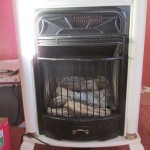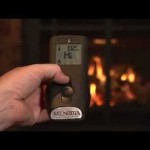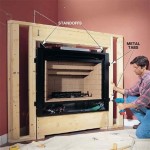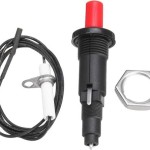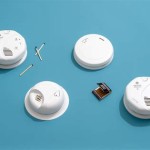How To Use a Fireplace Safely and Efficiently
Fireplaces offer warmth and ambiance, but understanding how to use them safely and efficiently is crucial for a positive experience. Improper fireplace usage can lead to safety hazards, reduced heating efficiency, and increased maintenance needs. This article provides a guide on best practices for using a fireplace effectively.
Preparing the Fireplace for Use
Before initiating a fire, a thorough inspection and preparation process is essential. This involves several key steps to ensure safe and efficient operation. Neglecting these steps can compromise safety and reduce the fireplace's heating effectiveness.
First, schedule a professional chimney sweep to inspect and clean the chimney at least once a year, or more frequently if the fireplace is used regularly. Creosote, a flammable byproduct of burning wood, accumulates in the chimney and can cause dangerous chimney fires. A professional chimney sweep will remove this buildup and inspect the chimney for any structural damage or blockages. Evidence of animal nests, cracks in the flue, or mortar deterioration should be addressed immediately by a qualified professional.
Second, inspect the firebox, the interior area where the fire is built. Remove any accumulated ash from previous fires. Excessive ash buildup can impede airflow and reduce the fireplace's efficiency. Ash can be removed with a shovel and placed in a metal container with a tight-fitting lid. The container should be stored away from combustible materials until the ash is completely cooled. Examine the firebox for any cracks or damage to the firebricks or refractory panels. These materials are designed to withstand high temperatures and protect the surrounding structure. Damaged firebricks or panels should be replaced promptly to prevent heat from damaging the fireplace's structure.
Third, ensure the damper is functioning correctly. The damper is a metal plate located in the chimney that controls airflow. When closed, it prevents drafts from entering the house when the fireplace is not in use. When open, it allows smoke and combustion gases to escape up the chimney. Before lighting a fire, ensure the damper is fully open. A partially or fully closed damper can cause smoke to back up into the room, leading to smoke inhalation and carbon monoxide poisoning. Test the damper's functionality by opening and closing it several times. If the damper is stuck or difficult to move, it may need to be lubricated or repaired.
Building and Maintaining a Fire
Building a fire correctly is essential for safe and efficient operation. The type of wood used and the method of building the fire significantly impact the fire's burn quality and the amount of smoke produced.
Use seasoned hardwood, which has been air-dried for at least six months. Seasoned wood has a lower moisture content than green wood, resulting in a hotter, cleaner burn with less smoke. Avoid burning softwoods, such as pine, which contain higher resin content and produce more smoke and creosote. Never burn treated wood, painted wood, or trash, as these materials release harmful chemicals into the air. Store firewood in a dry, well-ventilated area to prevent moisture buildup and mold growth. Cover the top of the woodpile to protect it from rain and snow, but leave the sides open to allow for airflow.
Build the fire in a teepee or log cabin configuration. The teepee method involves arranging kindling in a cone shape and then placing larger logs around the kindling. The log cabin method involves stacking logs in a square or rectangular shape, with kindling placed in the center. These configurations allow for good airflow, which is essential for a clean burn. Use kindling, such as small twigs and paper, to start the fire. Avoid using accelerants, such as gasoline or kerosene, as they can be dangerous and release harmful fumes.
Once the fire is established, maintain it by adding logs as needed. Add logs to the back of the firebox to prevent smoke from escaping into the room. Avoid overloading the firebox with too much wood, as this can reduce airflow and increase smoke production. Use a fireplace poker to adjust the logs and embers to maintain a steady burn.
Safety Precautions and Fire Extinguishment
Implementing robust safety measures is paramount when operating a fireplace. These measures encompass preventative actions and preparedness for potential emergencies. Familiarity with these protocols guarantees a safer and more secure experience.
Install and maintain carbon monoxide detectors in the home. Carbon monoxide is a colorless, odorless gas that can be deadly. Fireplaces can produce carbon monoxide, especially if they are not properly ventilated or maintained. Carbon monoxide detectors should be installed on every level of the home, particularly near sleeping areas. Test the detectors regularly to ensure they are functioning properly. Replace the batteries in the detectors at least once a year.
Use a fireplace screen to prevent sparks and embers from escaping the firebox. A fireplace screen should be made of sturdy metal mesh and should cover the entire opening of the firebox. This prevents sparks from landing on carpets, furniture, or clothing, which can cause fires. Keep flammable materials, such as curtains, furniture, and newspapers, away from the fireplace. Maintain a clear zone of at least three feet around the fireplace.
Never leave a fire unattended. Before leaving the room or going to bed, ensure the fire is completely extinguished. Allow the fire to burn down to embers and then spread the embers out evenly in the firebox. Use a shovel to cover the embers with ash. This will help to smother the embers and prevent them from reigniting. If uncertain about the fire being fully extinguished, use a small amount of water to extinguish any remaining embers.
Have a fire extinguisher readily available near the fireplace and know how to use it. Ensure that the fire extinguisher is properly rated for Class A fires, which involve ordinary combustibles, such as wood and paper. Familiarize yourself with the instructions on the fire extinguisher and practice using it. In the event of a chimney fire, evacuate the house immediately and call the fire department. Do not attempt to put out a chimney fire yourself.

How To Use A Fireplace Bob Vila

Five Easy Steps On How To Properly Use A Fireplace

How To Use A Fireplace The Complete Step By Guide

Use Your Fireplace Safely Fire Line

How To Properly Use Maintain Your Fireplace True Value
How To Start A Fireplace Fire 2 Safe And Easy Methods

Starting Fireplace For Beginners Traditional Method

How To Start A Fire In Fireplace

How To Use A Fireplace Damper The Right Way

How To Use Fireplace Tools Sootmaster Chimney Sweeps


